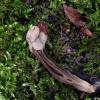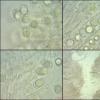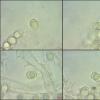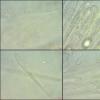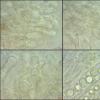
14-11-2025 16:26
 Marian Jagers
Marian Jagers
Hello everyone, On dead wood of Cytisus scoparius

14-11-2025 18:31
 Lothar Krieglsteiner
Lothar Krieglsteiner
Hello,can somebody provide me with a file of:Rothe

12-11-2025 09:25
 Viktorie Halasu
Viktorie Halasu
Hello, I need help with a pale terrestric Pseudom

11-11-2025 20:16
Bohan JiaHi, lastly I have found these tiny yellow decayin

09-11-2025 13:20
Hello.A tiny ascomycete, appearing as erupting gra

08-11-2025 00:29
 Francois Guay
Francois Guay
I found this species in Quebec, Canada, on herbace
 Recently I found this one specimen between about fifty Helvella crispa.
Recently I found this one specimen between about fifty Helvella crispa.Can this be a different form of crispa or yet another species?
The site is a well-evolved plantation of Hazel on supplied clayground.
Greets,
William

Hello William,
for me this looks like a (pale) form of H. lacunosa. The main macroscopic difference between crispa and lacunosa is not the colour, but the matter how the "cap" is placed in relation to the stipe. The "cap" of crispa is totally free, whereas that of H. lacunosa is laterally adherent to the stipe.
Best regards, Lothar
P.S. lacunosa is now a complex of species - ...

thanks for your interesting feedback.
I have re-examined the specimen and found that the "cap" has grown in two points with the stem. Is this sufficient to name this specimen as lacunosa?
Can lacunosa also be distinguished microscopically from eg crispa?
Regards,
William

Hello William,
I don`t know if there are microscopic differences. And yes: this is sufficient to name the specimen lacunosa - at least sensu lato. I do not have the overview on the lacunosa-group, so I don`t know if there are other possibilities than lacunosa sensu stricto for your specimen.
Best, Lothar


